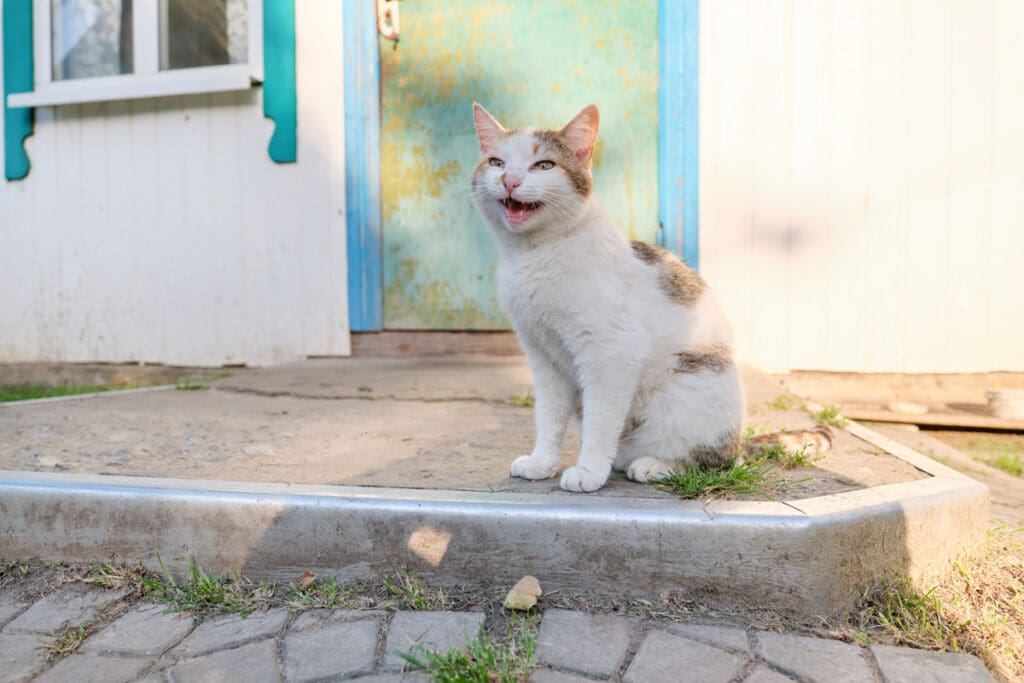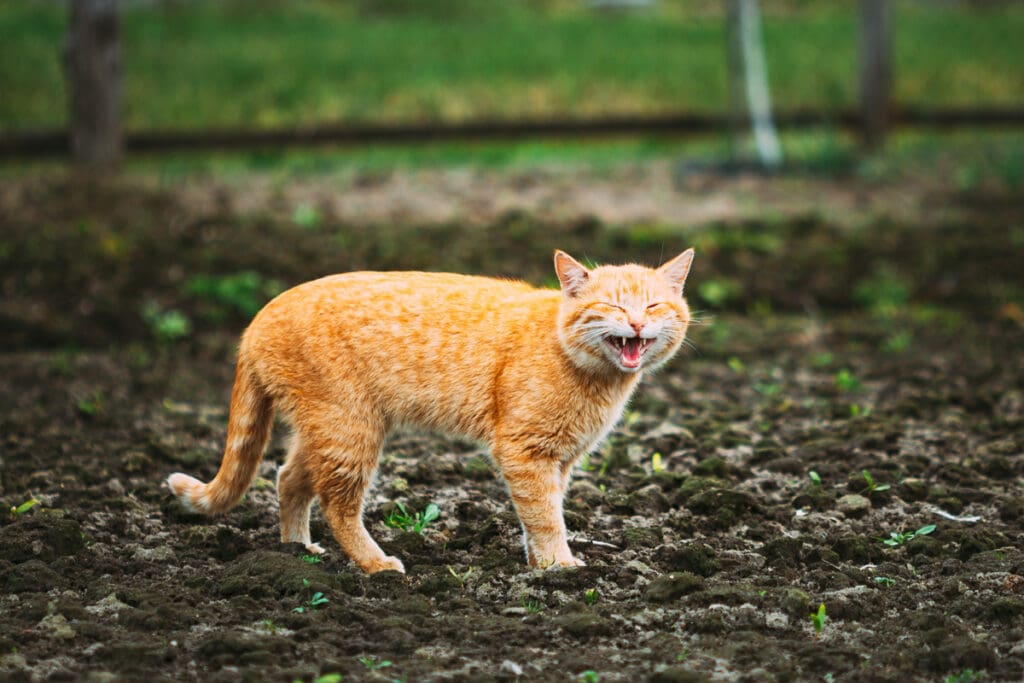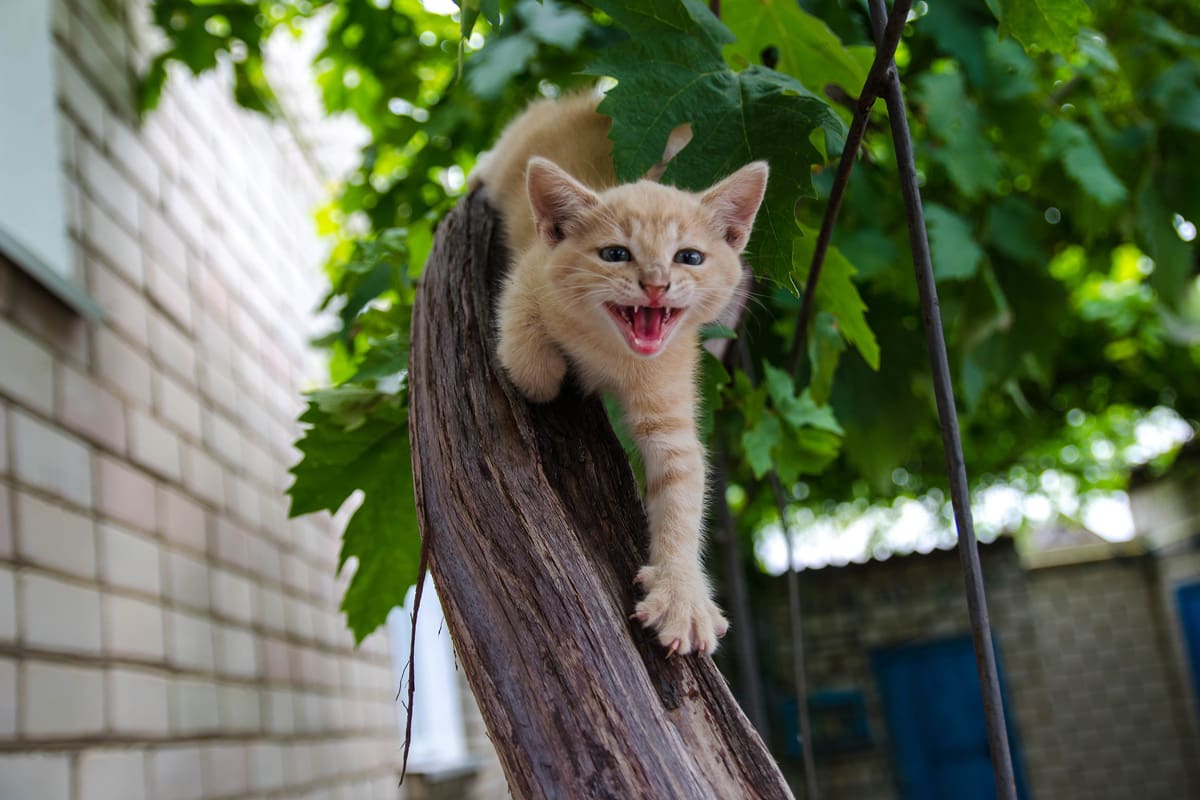The meows, purrs, yowls, chirps, and other noises your cat makes aren’t simply random, they are actually part of a feline vocabulary your cat is using to communicate with you. Here is what all those cat noises mean.
What Common Cat Noises Actually Mean
We all know that birds use a variety of sounds to communicate with one another. Believe it or not, cats come in second place in terms of having the widest range of vocalizations of all domestic pets.
In various situations, cats are capable of making many different and distinct utterances. Not only that, but some of these also have nuanced variations within them, with different inflections communicating importance. Cats use vocal sounds to express contentment, ease, fear, worry, and anger. Every sound a cat makes is an indicator of their emotional state.
Here is a look at a variety of cat sounds and what they mean.
1. Meow

The purpose of the most common cat sound of all in adult cats might surprise you. It is not a vocalization adult cats use to communicate with other cats. They use it nearly exclusively to communicate with humans.
Kittens meow to signal the need for their mothers. But as they mature, this vocalization fades away.
Does that mean that cats think humans are their mothers? Maybe. Generally speaking, when a cat meows it means it wants something, whether food, attention, or access to a room. Sometimes it’s also a way that cats give us a “welcome home” greeting.
2. Purring
The soft, deep, rumbling purring of a cat can bring up the image of an internal running motor. Usually, cats make this sound when they are nuzzled in our laps, and we take it as a sign of contentment.
However, there are occasions when purring is indicative of agitation. The telltale sign is not the sound of purring, but rather your cat’s body language. Make sure your cat’s ears aren’t pulled back and body isn’t tense. This posture denotes concern over something.
3. Chirping
Cats learn chirping from their mother, who uses a sound to tell kittens to pay attention and follow her.
When interacting with humans, a cat may chirp to get us to pay attention, or draw our attention to something the cat deems important.
4. Chirrups & Trills

Chirrups and/or squeaky trills are sounds that a cat may vocalize when it is excited and happy.
5. Chattering
Chattering is a sound a cat makes through its teeth. Sometimes this sound is accompanied by a squeak, chirp, or faint cry.
When a cat chatters it indicates its predatory excitement and its expression of its frustration of not being able to get at whatever prey has caught its attention.
6. Yowl
The long, drawn-out moan known as a yowl, is used for cat-to-cat communication and can have several meanings. Most commonly, it denotes meeting issues, territorial concerns, discomfort, or worry.
A cat will use a yowl to tell another it wants to mate or to tell another to stay out of its territory. However, sometimes it can be a way a cat might tell you it’s not feeling well. Sometimes cats who have been relocated to new territories or adopted to a new home often yowl to express a longing for their previous residence.
7. Caterwaul

This sound is described as being similar to a yowl, but more hollow-sounding, something like “ah-roo-uh.”
Caterwaul are sounds un-spayed females in heat make to prospective mates. If your cat is making this sound, it will likely do anything to escape and get outside, so be on guard.
8. Hiss
The body language that accompanies a hissing cat pretty much tells us a lot about what’s going on in its mind. The cat’s back may be arched, its hair standing on end, its ears flattened, its tail flattened, and its mouth open, bearing things and ready to strike.
It’s clear that a hissing cat feels threatened and is ready to fight. A hissing cat may also spit. When a cat hisses, it means back off, then do whatever you can to remove or reduce the perceived threat.
Read More: 10 Tips to Win Over Your Cat






